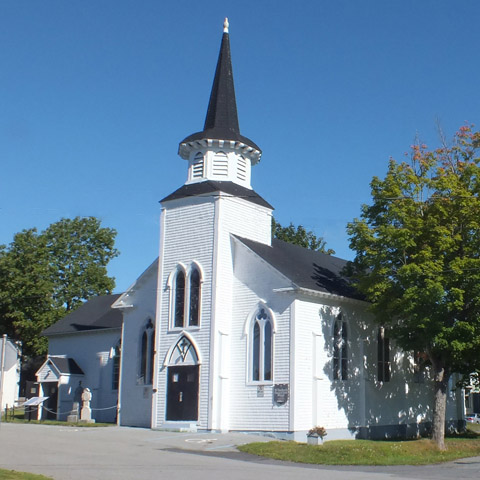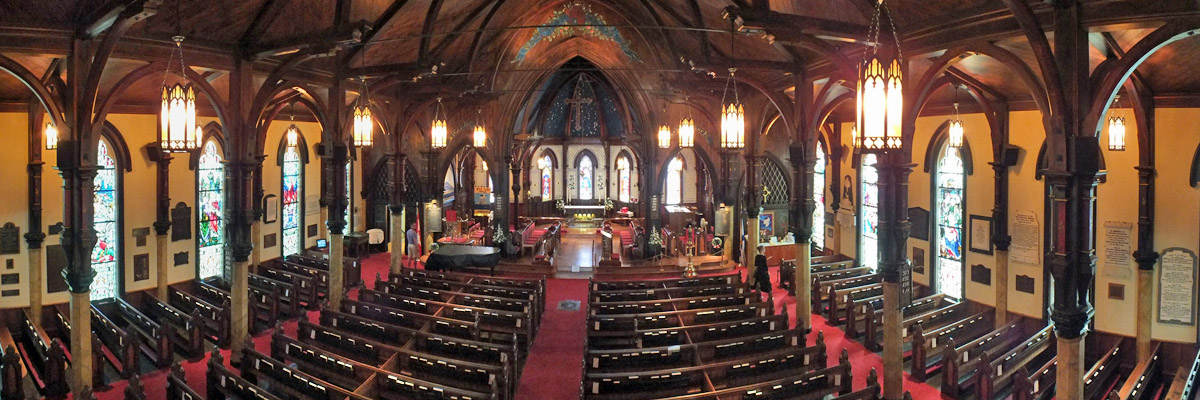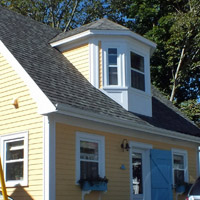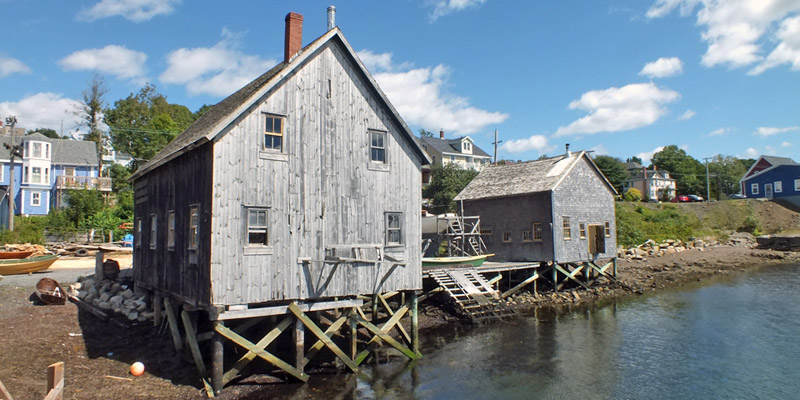
from the Gulf of St Lawrence to the Sea of the Hebrides


29 August 2012
The North Atlantic Arc Home
| .August. | September | .October. | ||||
| S | M | T | W | T | F | S |
| 24 | 25 | |||||
| 26 | 27 | 28 | 29 | 30 | 31 | 1 |
| 2 | 3 | 4 | 5 | 6 | 7 | 8 |
| 9 | 10 | 11 | 12 | |||
| 4 | 5 | 6 | ||||
| 7 | 8 | 9 | 10 | 11 | 12 | 13 |
| 14 | 15 | 16 | 17 | 18 | 19 | 20 |
| 21 | 22 | 23 | 24 | 25 | 26 | 27 |
| 28 | 29 | 30 |
 |
|
Wednesday 29 August 2012--Old Town Lunenburg is a UNESCO World Heritage site, so listed, according to the UNESCO plaque up the hill, as
"an outstanding example of British colonial settlement in North America, in terms both of its conception as a model town plan and its remarkable
level of conservation." It's hard not to wonder whether the indigenous Mi'kmaq appreciate the "exceptional universal value" the designation
indicates. The British settlement of what had previously been an Acadian and Mi'kmaq village was, along with others in the region, a unilateral
violation of established treaties, and the area was for some years subject to a series of raids and minor wars, which culminated in the French and
Indian War of 1754-63. Then there was conflict with the Americans during the Revolution and the War of 1812, after which things seem to have
settled down. Many of the settlers were "Foreign Protestants" from Germany, Switzerland, and Montbéliard (now part of France), encouraged to
immigrate by the British government.
In the 19th century, the town's economy shifted from agriculture to fishing. The local boatyards built wooden fishing schooners well into the 20th century. The most famous was the Bluenose. The boatbuilding skills were not lost, and the town became well-known for the construction of several historical replicas--the Bounty, the Bluenose II, and HMS Rose. The Bluenose II is here now, nearing the end of a multi-year restoration and refitting. I decide to explore the town from the top of the hill down, and quickly notice that the many interpretation panels around all have little maps in one corner showing where all the other panels are. This makes a systematic investigation easy. Highlights include the Academy, Lutheran and Anglican churches, and dozens of Lunenburg bumps. This latter is a peculiar local architectural feature, an adaptation of a five-sided Scottish dormer. It was intended originally to provide some interest to otherwise plain wooden frame houses, but was later incorporated into ornate Victorian buildings, and is a common feature of new construction to this day. There are many interesting variations around town, on houses of different styles. .St John's Anglican Church suffered a catastrophic fire in 2001, with more than half of the building destroyed. Restoration took four years, costing nearly seven million dollars. Stained glass windows, interior woodwork, and the bell tower were painstakingly reconstructed, and a new organ was commissioned. The church was built in 1754, making it the second-oldest Protestant church in Canada (not discounting various refurbishments in the 19th and 20th centuries). Standing in it now, I'd never have guessed that the edifice had suffered such a disaster. Not far from the waterfront, I find the Ironworks Distillery, housed in a former marine blacksmith's shop. It seems to be the busiest place in town. They make vodka from apples here, and apple brandy, and rum. The fellow giving out samples is, I believe, one of the principals of the business, and I ask him about wood (ex-bourbon for the rum, Hungarian oak for the apple brandy) and other aspects of the process. He shortly excuses himself and disappears. Funny, in Scottish distilleries, folk are quite happy to get into it with you if you give the impression of knowing a bit about it. They're not used to that here, I guess--I could almost see the fellow thinking, "Oh no, a distillery nerd." I suppose I can't blame him for not wanting to get bogged down when there is a rapidly moving parade of tourists passing through, looking to spend money. I'm interested in apple brandies, so buy two half-bottles (one for now, one to take home). I know little about rum, but found the sample intriguing, and take a bottle of that, as well. Down the street, I run into the Toronto couple from Brier Island. Small world. We chat briefly, comparing notes on where we've been and where we're going. Lunch is at the Knot Pub, just west of the old town. I pass by a section of the Berlin Wall standing incongruously by the road, and the site of Camp Norway, a training ground for Norwegian forces during WWII. Then I am at the edge of the golf course across the harbor from town. The view from here is gorgeous, and I take dozens of photos, all pretty much the same. It's a nice spot to be, and I linger for quite some time. Heading back into town, I consider a visit to the Fisheries Museum of the Atlantic. It's been years since I've been in, going back to the days when Lunenburg was a lunch stop on the tours, and I know it's well worthwhile. There isn't much time until closing, though, so I opt for a rest back at my room instead. Dinner is in the Grand Banker again--mussels, salmon, sauvignon blanc. That sounds familiar, doesn't it? I close out the day with a couple of pints at the Knot. Next |
 |
Lunenburg
 |
Lunenburg
 |
Lunenburg Academy
 |
St Norbert's Catholic Church
 |
St John's Anglican Church
 |
St John's Anglican Church
 |
 |
The Jessen Bell
 |
St John's Anglican Church
 |
Zion Evangelical Lutheran Church
 |  |  |  |  |
 |  |  | ||
 |  | |||
 |  | |||
 |  |  |  |  |
Bumps
 |
Lunenburg
 |
Montbéliard Monument
 |
The Bluenose II
 |
The Picton Castle
 |
Lunenburg
 |
Lunenburg
 |
Ironworks Distillery
 |
Ironworks Still
 |
The Knot Pub
 |
Afternoon Pint
 |
Camp Norway
 |
Berlin Wall Section
 |
Out Of Business
 |
Lunenburg
 |
Lunenburg Panorama > > >
 |
The Bluenose II
 |
Lunenburg
 |
Old French Cemetery
 |
The Knot Pub
Around Lunenburg
Next
| .August. | September | .October. |
| S | M | T | W | T | F | S |
| 24 | 25 | |||||
| 26 | 27 | 28 | 29 | 30 | 31 | 1 |
| 2 | 3 | 4 | 5 | 6 | 7 | 8 |
| 9 | 10 | 11 | 12 | |||
| 4 | 5 | 6 | ||||
| 7 | 8 | 9 | 10 | 11 | 12 | 13 |
| 14 | 15 | 16 | 17 | 18 | 19 | 20 |
| 21 | 22 | 23 | 24 | 25 | 26 | 27 |
| 28 | 29 | 30 |
The North Atlantic Arc Home

Mr Tattie Heid's Mileage
Results may vary
MrTattieHeid1954@gmail.com